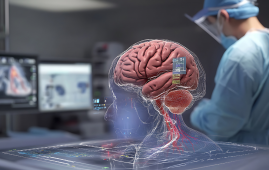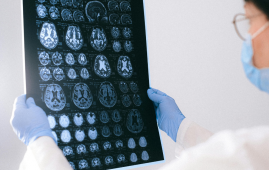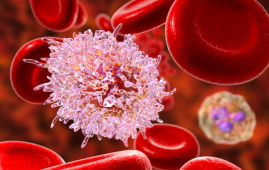

A new frontier in early diabetes intervention
A groundbreaking study published in Nature Medicine highlights how AI diabetes risk detection can identify early warning signs even when traditional tests appear normal. Using continuous glucose monitoring (CGM) and multimodal glycemic profiling, researchers from the PROGRESS study analyzed over 2,400 participants. They discovered that subtle glucose spike patterns may predict type 2 diabetes (T2D) risk years before HbA1c or fasting glucose indicate abnormalities.
Explore All Endocrinology CME/CE Conferences
The findings emphasize that standard metrics often miss critical fluctuations, especially postprandial glucose spikes, which were seen even in normoglycemic individuals. This new approach offers clinicians a more nuanced, personalized glycemic risk profile, paving the way for earlier interventions.
Multimodal Glycemic Profiling and AI Insights on Diabetes Risk Detection
The study’s strength lies in its multimodal glycemic profiling approach, which goes far beyond conventional blood glucose measurements. Instead of relying solely on fasting glucose or HbA1c levels, researchers integrated continuous glucose monitoring (CGM) data with lifestyle, genetic, microbiome, and physiological information to create a comprehensive picture of each participant’s metabolic status.
Using this extensive dataset, a machine learning diabetes model was trained to detect subtle glucose spike patterns that often precede type 2 diabetes. These spikes, especially postprandial glucose fluctuations, were found to carry predictive value even in individuals who appeared normoglycemic under standard testing. This approach revealed that many people classified as “low-risk” based on HbA1c were showing early metabolic dysregulation.
One of the key insights was the connection between gut microbiome diversity and glucose control. Participants with richer microbial diversity tended to exhibit more stable glucose patterns and faster spike resolution, indicating that the microbiome plays a significant role in metabolic resilience. Other variables, such as nocturnal hypoglycemia metrics, resting heart rate, BMI, and physical activity, were also integrated into the model, allowing a more accurate prediabetes risk assessment compared to traditional methods.
This integration of multiple data layers provides healthcare professionals with a personalized glycemic risk profile, offering a powerful tool for early detection and intervention. For clinicians, it demonstrates that metabolic health is not a single number but a dynamic interaction of biological and lifestyle factors that can now be quantified and tracked in real-world settings using AI and CGM.
Clinical Implications for HCPs
For healthcare professionals, these findings underscore the need to integrate early diabetes intervention strategies using CGM and AI-based profiling into preventive care. By focusing on prediabetes risk assessment and identifying high-risk individuals earlier, clinicians can tailor interventions to reduce type 2 diabetes prediction progression.
This research supports a shift toward personalized glycemic risk profiles and highlights the value of physical activity and glucose regulation as part of individualized care plans. Incorporating AI tools with CGM can provide a more accurate and inclusive approach to diabetes prevention, especially in diverse populations.
For more information:
Multimodal AI correlates of glucose spikes in people with normal glucose regulation, pre-diabetes, and type 2 diabetes. Carletti, M., Pandit, J., Gadeleta, M., Chiang, D., Delgado, F., Quartuccio, K., Fernandez, B., Garay, J.A.R., Torkamani, A., Miotto, R., Rossman, H., Berk, B., Baca-Motes, K., Kheterpal, V., Segal, E., Topol, E.J., Ramos, E., Quer, G. Nature Medicine (2025). DOI: 10.1038/s41591-025-03849-7, https://www.nature.com/articles/s41591-025-03849-7
more recommended stories
 Safer Allogeneic Stem Cell Transplants with Treg Therapy
Safer Allogeneic Stem Cell Transplants with Treg TherapyA new preclinical study from the.
 AI in Emergency Medicine and Clinician Decision Accuracy
AI in Emergency Medicine and Clinician Decision AccuracyEmergency teams rely on rapid, accurate.
 Innovative AI Boosts Epilepsy Seizure Prediction by 44%
Innovative AI Boosts Epilepsy Seizure Prediction by 44%Transforming Seizure Prediction in Epilepsy Seizure.
 Hypnosis Boosts NIV Tolerance in Respiratory Failure
Hypnosis Boosts NIV Tolerance in Respiratory FailureA New Approach: Hypnosis Improves NIV.
 Bee-Sting Microneedle Patch for Painless Drug Delivery
Bee-Sting Microneedle Patch for Painless Drug DeliveryMicroneedle Patch: A Pain-Free Alternative for.
 AI Reshapes Anticoagulation in Atrial Fibrillation Care
AI Reshapes Anticoagulation in Atrial Fibrillation CareUnderstanding the Challenge of Atrial Fibrillation.
 Hemoglobin as Brain Antioxidant in Neurodegenerative Disease
Hemoglobin as Brain Antioxidant in Neurodegenerative DiseaseUncovering the Brain’s Own Defense Against.
 Global Data Resource for Progressive MS Research (Multiple Sclerosis)
Global Data Resource for Progressive MS Research (Multiple Sclerosis)The International Progressive MS Alliance has.
 Cancer Cells Learn to Self-Report: A New Frontier in Immunotherapy
Cancer Cells Learn to Self-Report: A New Frontier in ImmunotherapyHow a Drug Complex Enables Immune.
 Staphylococcus Shows Complex Enzyme Redundancy, Study Finds
Staphylococcus Shows Complex Enzyme Redundancy, Study FindsA Bacterial Pathogen That Refuses to.

Leave a Comment